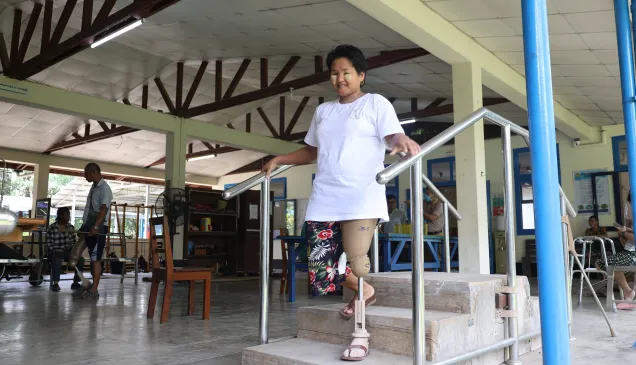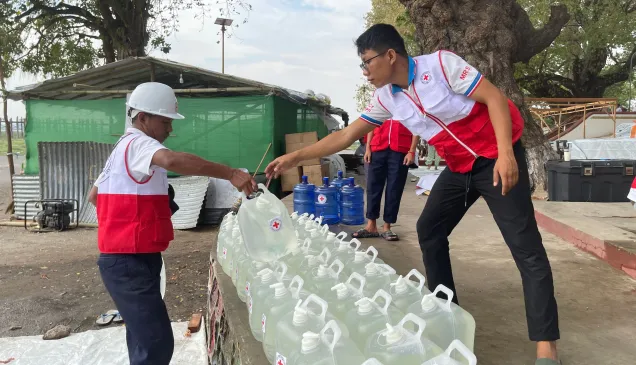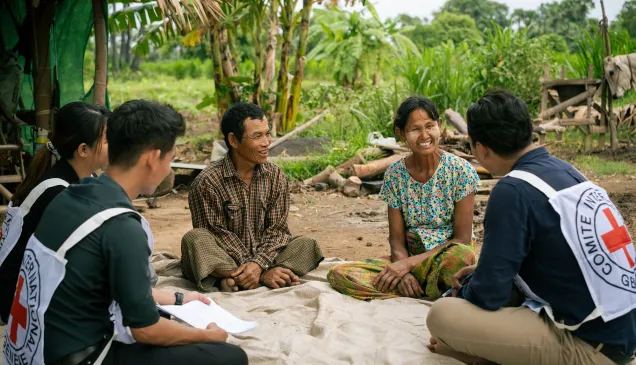In Pictures: Myanmar One Month On
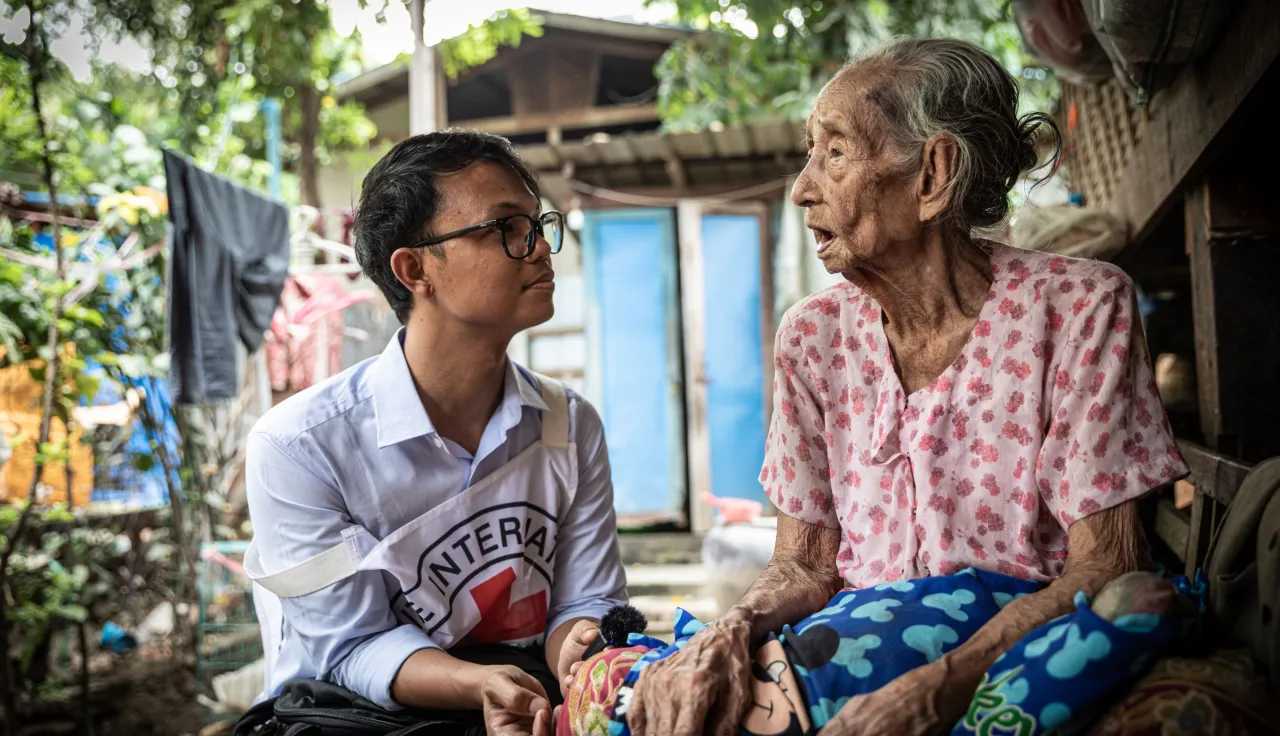
A powerful earthquake rocked central Myanmar on March 28, buckling roads in the capital Naypyidaw, damaging buildings and forcing people to flee into the streets in neighbouring Thailand.
Thousands of people were made homeless in an instant, worsening a humanitarian situation that was already degraded by years of conflict. Monsoon rains and high temperatures have made living conditions for those who survived even more difficult.
One month on, people still need the basics—clean water, food, and shelter—but they also are in need of additional assistance to stay safe from unexploded mines and bombs which may have been shifted by the earthquake. The International Committee of the Red Cross (ICRC) and the Myanmar Red Cross Society (MRCS) have been supporting communities across the country who were affected by the earthquake.
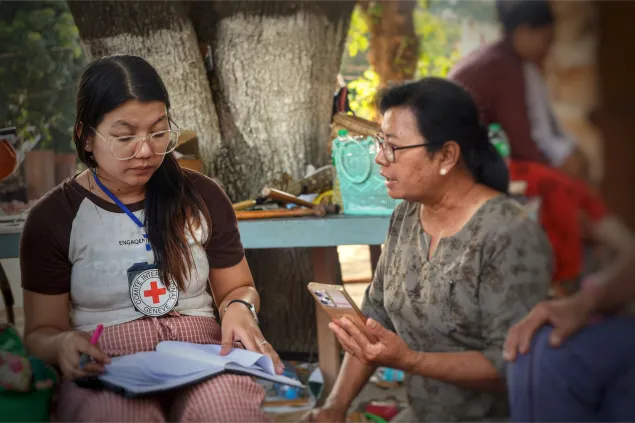
Ei Shwe Sin Myo (left) is a water and habitat engineer at the ICRC's sub-delegation in Mandalay, and a member of an assessment team that recently visited Sagaing township to better understand the needs of communities still reeling from the March 2025 earthquake. In addition to doing technical assessments, she meets with members of the communities where the ICRC is already providing support, listening to their needs as well as their experiences since the disaster occurred.
“We urgently need clean drinking water and some form of lighting to protect ourselves from snakes and other dangerous creatures at night,” shared one community member who is living in a temporary shelter in Sagaing.
With daytime temperatures reaching 40° Celsius in the day time, access to safe drinking water is livesaving, and desperately needed as already fragile infrastructure has been damaged.
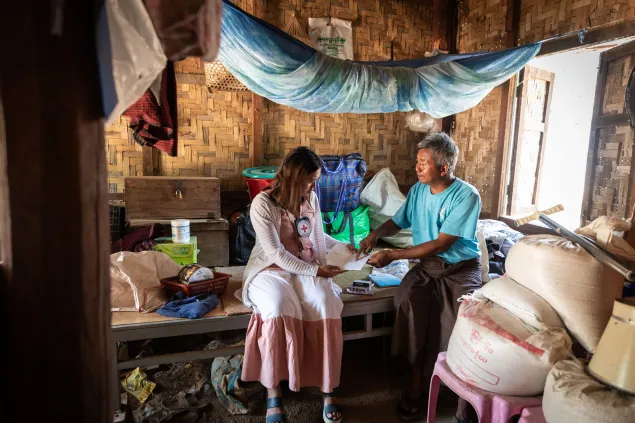
U Thein Tun is a 51-year old man living in a camp for people who were displaced due to the ongoing armed conflicts in Myanmar. He fled his village of Maygun in the Sagaing region in 2023 with his five siblings and elderly father.
"My main burden is the medical treatment for my father, who is elderly and has many medical issues, especially since he has had strokes. On the day of the earthquake, he had a medical emergency so we took him to the hospital. Just as we returned, the earthquake struck, right before lunchtime."
U Thein has medical issues of his own including heart disease, diabetes and gout, and depends on the medical clinic supported by the ICRC for much of his medication.
"Our only source of income is through our nephew and niece, and we use most of this money to buy pay for medication and doctors. The clinic reduces the burden a lot, so we really appreciated it.
I received a two-week food ration from the ICRC which is really useful after the earthquake, because no one dared to take anything out of the collapsed building. As we are all older, we don't consume as much like young families, so the rations last longer than two weeks for us."
The ICRC is enabling access to medical care by affected people through our support to health centres and the MRCS mobile clinic. Our support allows those who cannot afford basic medicines to receive them free of charge.

In this part of Sagaing township, four out of five families are still sleeping outside, either because their homes have been destroyed or severely damaged or because they are afraid to risk going inside structures that are clearly unsafe. The local community has come together through a community based / civil society organization where the community cooks and distributes food. The ICRC is supporting these kitchens by providing food assistance including rice and other essential food items.
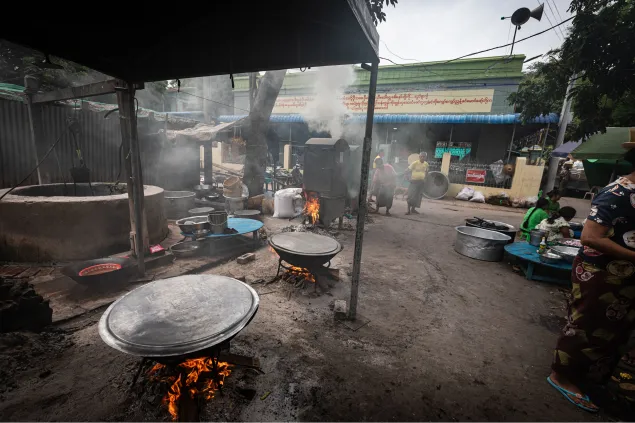
These are the cooking facilities of the community kitchen in the Sagaing township, which is providing meals to people displaced by the earthquake in March 2025.
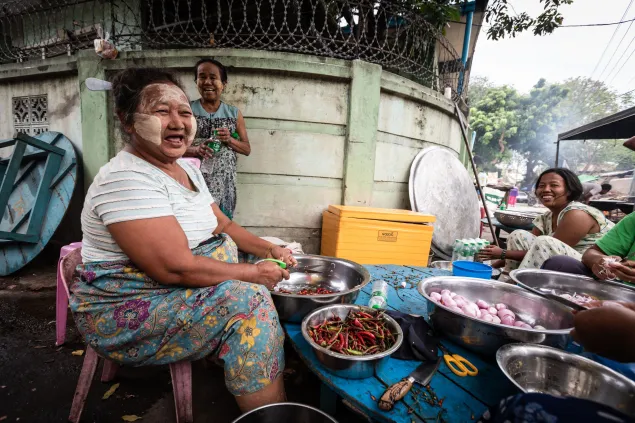
Women from the local community take part in cooking meals at the community kitchen for people affected by the earthquake in Sagaing.
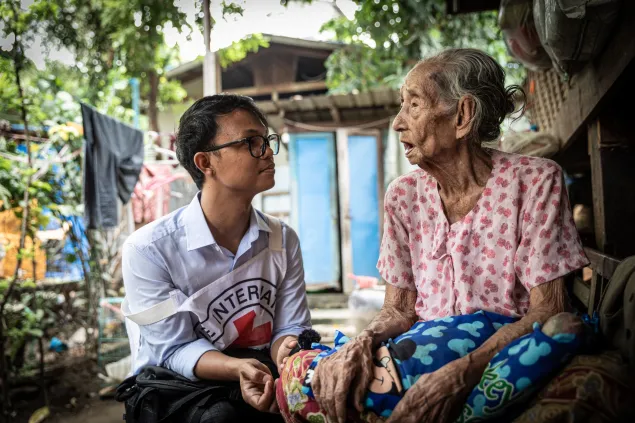
Daw Ma Kyi is 98 years old and has seen many changes in Myanmar during her lifetime. She remembers the big earthquakes that struck the country in 1956, but this one felt even worse to her. She is not able to use her legs, so spends most days sitting on her bench outside her home where she lives with her extended family including her grandchild.
During the March 2025 earthquake, most of her family was away from the home, and those that were home were not able to carry her. When the ground started shaking again, she told us that all she could do was hold on tightly to her favourite bench. She thought her life would end that day.
Daw Ma Kyi and her family are among the lucky ones; all of her family are safe and their home survived the quake. But others in the same ward have been less lucky. Today, around four out of every five families sleep outside their homes, many of which are damaged beyond repair, with others feeling too unsafe to return indoors. They worry about the upcoming monsoon season. The ICRC is supporting the community in this area along with many others, by providing food for the communal community kitchen.
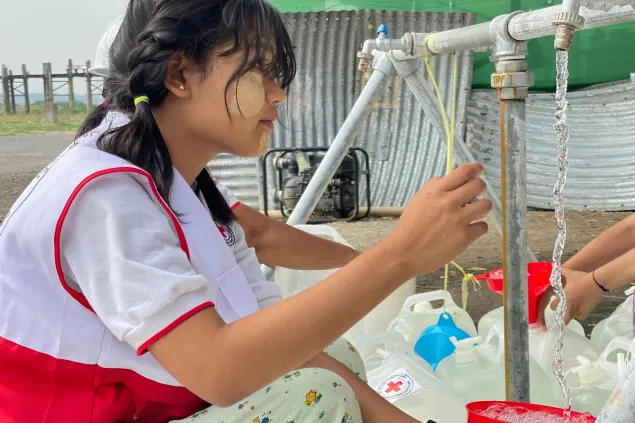
After the earthquake, water supplies in Mandalay and its townships were severely disrupted. The Myanmar Red Cross Society - with the support of the ICRC and other partners - has deployed water purification units such as this one in Amarapura.
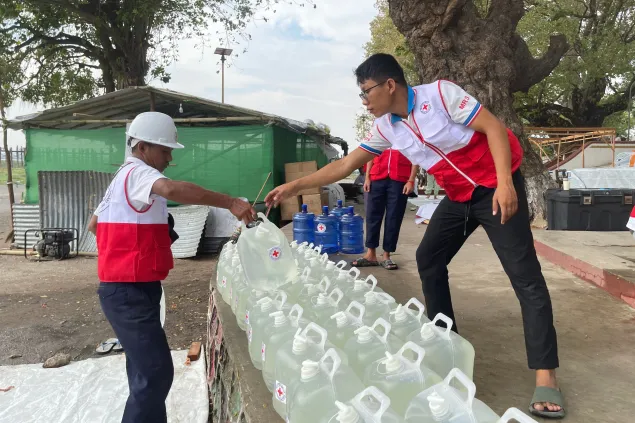
At this site, the ICRC have provided water containers for storage, generators, and more, enabling MRCS to continue providing safe drinking water to communities in need.
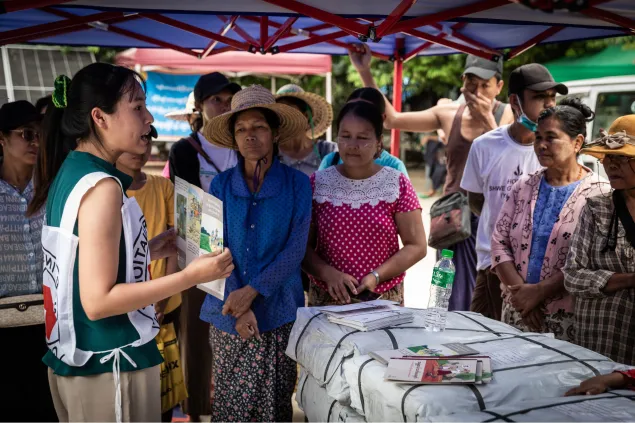
Yadana Oo, a weapon contamination field officer at the ICRC's sub-delegation in Mandalay, shares important information on the renewed risk from weapon contamination with teachers and community members at a school in Sagaing Township. The school is also hosting people displaced from their homes as a result of the March 2025 earthquake.
The ICRC has been providing information to at-risk communities about the renewed dangers of weapon contamination following this disaster through face-to-face sessions in communities and online/digital communication, following our well-established risk awareness and safer behaviour approach.
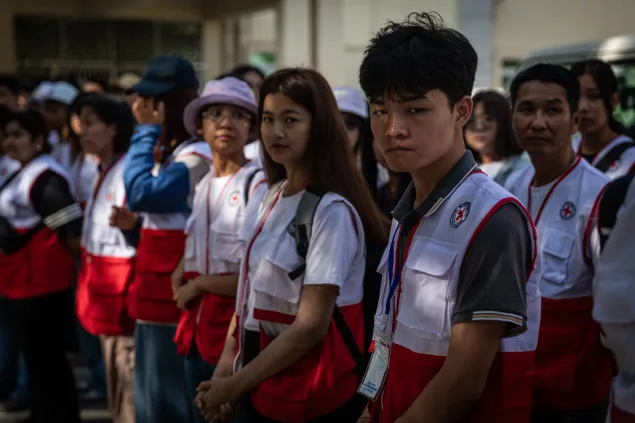
These volunteers, all in their late teens and early twenties are part of the MRCS university branch volunteering system. Many are new volunteers who came forward after the earthquake to help those in their communities and city.

